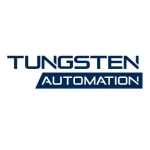What is our primary use case?
My use case for UiPath Document Understanding is invoice processing, as most vendors share invoices that need to be posted in the ERP (Enterprise Resource Planning) software. The vendor sends invoices via email whenever my organization purchases goods or products, so the ERP is updated whenever a product is received. Still, before making a payment, there needs to be some validation. For example, you have to check that the invoice sent matches the product received, so this is where I use UiPath Document Understanding.
I use the solution to extract the data from the invoice. Then I validate it with the ERP software in terms of which product has been received, including the unit price, shipping charge if applicable, the tax, which depends on the state, and product quantity. My organization needs to validate all data before paying the vendor, which is where UiPath Document Understanding becomes useful.
The most common type of invoice processed within the organization is the purchase order, which is more structured, so extracting the data is easier. It's unlike a utility bill, such as an Internet or electricity bill, with no purchase order and a different invoice structure. It makes it a bit more challenging to train the machine learning model in UiPath Document Understanding when processing utility bills versus purchase orders, though not impossible.
Currently, my organization focuses on purchase orders in terms of UiPath Document Understanding usage. Still, once that's successful, there is a possibility of using the solution on other invoice types.
About sixty-five to seventy percent of the invoices are automatically processed with the help of UiPath Document Understanding, though it could vary from business to business. Failures rarely happen and are usually the result of the business rules or conditions. About twenty percent of the processes require human intervention.
How has it helped my organization?
UiPath Document Understanding helped improve my organization by reducing human errors and intervention. Humans handled the entire task before the organization used UiPath Document Understanding, and it was a huge task that could only be completed within the year. In contrast, UiPath Document Understanding makes it possible to complete the task within a month, specifically completing all invoices that flow monthly within the same month. In the past, you had to delegate more work to humans, but after integrating with UiPath Document Understanding, the task required less human work, and the solution used up fewer resources compared to the amount of resources used up by humans doing the job. The solution enabled humans to work on other tasks, helping free up staff time by sixty to seventy percent.
What is most valuable?
I found UiPath Document Understanding helpful in automating different types of processes. One process can be split into multiple processes or sub-processes.
For example, when the vendor sends emails, I can download all emails through automation, mainly via UiPath Document Understanding. Downloading the emails can be a continuous process, scheduled at different intervals in a day. The next sub-process made possible by the solution is extracting the data from each invoice.
You can also use UiPath Document Understanding for ID management or extracting data from IDs, such as passports or government-issued IDs, which I like.
Signature matching is another feature of the solution that you can use, which I found good, though I only tested it. That feature wasn't used in production because, in my organization, UiPath Document Understanding is primarily used for data extraction from invoices.
I also found the parking feature in the solution interesting. For example, when you train the model but have data that's not extracted completely, or you are unsure, you can park that invoice and then have a human interfere to validate it.
UiPath Document Understanding can handle varying document formats, such as handwriting and signatures. Still, accuracy in data extraction from handwriting is fifty-fifty and would depend on the quality of handwriting. For example, the digit seven could be mistaken as one. For signatures, about sixty percent of the data matches or is correctly extracted by the solution.
The AI or machine learning capability of UiPath Document Understanding works and is successful seventy to eighty percent of the time. My organization trains the model with a set of invoices from each vendor to pick specific data, such as invoice number and date. Data extraction success varies with the number of invoices trained and if there's a new template, but you can expect the success rate of the machine learning module in UiPath Document Understanding to be between seventy to eighty percent.
UiPath Document Understanding has two parts: the AI, similar to integrating ChatGPT to your API, and the forms, where a human can validate the form as the solution acts as a parking station where the data extracted by the bot, if you're unsure of the data or the data wasn't extracted properly, may be parked there so a human can intervene and validate it.
In terms of how often human validation is required for UiPath Document Understanding outputs, you'd put specific logical conditions after the extraction. For example, the quantity, unit, and total amount would be integrated. Suppose the quantity and unit price are extracted correctly, but the total amount was incorrectly extracted. In that case, that won't always need to go through human validation because UiPath Document Understanding can automatically calculate. For one hundred invoices, at most, five to six invoices go through human validation, while the rest don't have to.
UiPath Document Understanding can be integrated with other systems and applications, and my organization has tried it by integrating the solution with Python. My organization built a machine learning model with another system where UiPath Document Understanding was integrated with UiPath data services, and there was even a dashboard that gave insights on how many invoices were processed, which invoices fell under which state, and so on.
What needs improvement?
An area for improvement in UiPath Document Understanding is data extraction from scanned documents. It could be better because I've observed a ten percent failure or flaw whenever the vendor scans and converts documents into PDFs.
For how long have I used the solution?
I've been using UiPath Document Understanding for two and a half years.
What do I think about the stability of the solution?
Sometimes, the bot or system resources cause UiPath Document Understanding to crash, but not frequently, and it's covered by the one-hour maintenance a month. I find the solution stable.
What do I think about the scalability of the solution?
Scalability in UiPath Document Understanding is very good because my organization can scale the same logic or script it developed with UiPath Document Understanding into any of its systems. If you deploy the solution in one ERP system, for example, you can install it in another system at any point in time, and configuration would take about one to two days, plus testing. UiPath Document Understanding is scalable.
How are customer service and support?
I've contacted the technical support for UiPath Document Understanding. At the initial deployment stage, a specific resource was allocated to my organization, mainly because the solution was new. It was in the beta stage so that I could contact the resource for any difficulties or doubts, and I've contacted the resource multiple times.
I'd rate the UiPath Document Understanding support team a nine out of ten because sometimes there was a delay in communication as the previous resource was from a different time zone, so another resource was allocated to my organization, which belonged to the same time zone as mine.
How would you rate customer service and support?
Which solution did I use previously and why did I switch?
My organization used to do the tasks manually and tried Power Automate for automation, but found that solution a bit difficult compared to UiPath Document Understanding. UiPath introduced UiPath Document Understanding to my organization, and the organization found that it was a proper solution.
How was the initial setup?
I was involved in the initial deployment of UiPath Document Understanding, and I found the process straightforward. You just had to activate the licenses one time. After that initial license activation, you can quote the number of licenses you need to UiPath, and it will be automatically updated in the Orchestrator. The setup would take around one week to fifteen days in the initial stage, and the maintenance comes after, which takes just one to one and a half hours.
What about the implementation team?
I deployed UiPath Document Understanding with about three to four team members. The solution was deployed in-house.
What was our ROI?
I've seen ROI from UiPath Document Understanding for the past two and a half years because the solution helped reduce about seventy to eighty percent of human tasks, which meant that my organization could utilize the staff in other processes that could not be automated or tasks that had non-standardized logic or conditions. Though the ROI could also depend on how much you invested and your actual staff, I've observed ROI from UiPath Document Understanding.
My organization saw the potential in the solution after some demos but could not see the value immediately. Initially, the results weren't as good, with some difficulties. Still, with the help of the UiPath support team, improvised data extraction, and two to three months after moving UiPath Document Understanding to a production environment, the organization saw value from it.
What's my experience with pricing, setup cost, and licensing?
UiPath Document Understanding offers fair pricing, primarily if you consider the number of resources and human work the solution reduces, plus the ROI you can get from it.
Which other solutions did I evaluate?
My organization had a native PDF document extraction tool that could have worked if the vendors had similar invoices or templates, but that wasn't the case. My organization also tried a machine learning tool with some outsourced Python, but it wasn't very standardized or robust, so it wasn't good to use versus UiPath Document Understanding.
What other advice do I have?
UiPath Document Understanding has a public cloud deployment within my organization, as there was a constraint with deploying it on-premises, requiring a VPN within the same network. Hence, my organization chose to install it on the cloud via a cloud orchestrator that even allowed access from anywhere in the world.
The initial deployment of UiPath Document Understanding required two people, but as the number of businesses increased, my organization had to add five to six people to the deployment team to handle the installation, script maintenance, and connecting to the client center. The installation requires three to four people and two more for support. Six people to deploy UiPath Document Understanding for thirty to forty businesses would be sufficient.
UiPath Document Understanding doesn't require much maintenance because UiPath usually does automatic updates or feature updates to the cloud orchestrator and sometimes to the scripts my organization built. Maintenance is minimal and would only take about one hour per month.
My rating for UiPath Document Understanding is eight out of ten because it still needs improvement in the quality of scanned documents and data extraction.
My advice if you're looking into UiPath Document Understanding is to check whether it's a solution you really need. Think about the tasks requiring UiPath Document Understanding and the features you're looking for. Consider the costs and time associated with the solution, as the clock would start ticking after you buy the license. You need to analyze precisely why you need UiPath Document Understanding and what features you need from it. The team responsible for it should also be well aware of the solution's features to maximize its use.
My organization is a UiPath partner which buys the license and provides it to businesses.
Which deployment model are you using for this solution?
Public Cloud
If public cloud, private cloud, or hybrid cloud, which cloud provider do you use?
Other
Disclosure: PeerSpot contacted the reviewer to collect the review and to validate authenticity. The reviewer was referred by the vendor, but the review is not subject to editing or approval by the vendor. The reviewer's company has a business relationship with this vendor other than being a customer: Partner


















